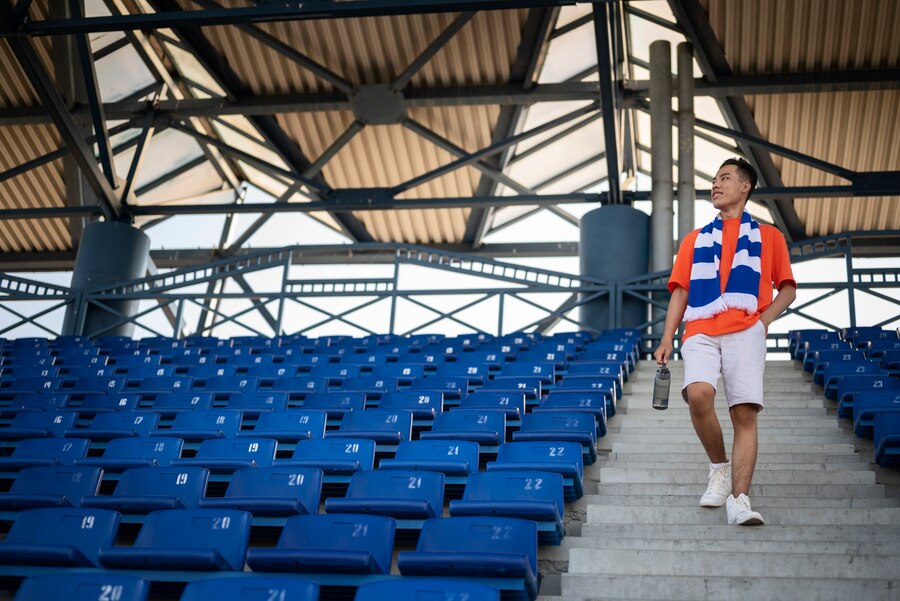The United States brags a wealthy donning history, with enthusiastic fans cheering on their favorite groups over an assortment of disciplines. But past the shining lights and advanced wonders of today’s stadiums lie more seasoned scenes, soaks in convention and bearing witness to decades of athletic triumphs and massacres. These terrific ancient stadiums are confirmation to a bygone time in sports design, advertising a special see into the advancement of the recreations we cherish. Let’s set out on a trip to investigate a few of the most seasoned stadiums still standing within the US, each with its own captivating story to tell.
Fenway Stop (Boston, Massachusetts – 1912)
Fenway Stop, the cherished home of the Boston Ruddy Sox Major League Baseball (MLB) group, could be a genuine symbol. Opened in 1912, it’s the most seasoned ballpark still in operation in MLB. Nicknamed “The Green Creature” for its towering left-field divider, Fenway Stop oozes an verifiable charm with its hilter kilter measurements, manual green scoreboard, and the famous solitary ruddy situate checking the spot where Ted Williams hit a domestic run that cleared the divider in 1946. Past the idiosyncratic highlights, Fenway Stop throbs with a dynamic climate, with energetic Ruddy Sox fans making an electric vitality on amusement days. Strolling through its entryways is like venturing back in time, a journey for baseball devotees around the world.
Wrigley Field (Chicago, Illinois – 1914)
Fair two a long time more youthful than Fenway Stop, Wrigley Field, domestic to the Chicago Whelps of MLB, is another cherished baseball point of interest. Standing out with its particular ivy-covered outfield dividers, Wrigley offers a pleasant setting for America’s diversion. The stadium brags a marquee showing the date, amusement time, and temperature in vintage glowing light bulbs, including to its nostalgic appeal. Wrigley Field has seen its share of history, counting the scandalous “Revile of the Billy Goat” that evidently tormented the Offspring for decades. The stadium’s housetop grandstands offer an interesting viewpoint of the game, a tradition that has gotten to be synonymous with Wrigley.
Harvard Stadium (Cambridge, Massachusetts – 1903)
Moving gears from baseball to American football, Harvard Stadium holds the qualification of being the most seasoned collegiate stadium within the US, opening its entryways in 1903. Built in a horseshoe shape, the stadium oozes a classic charm with its Georgian Restoration engineering. Harvard Stadium has seen incalculably amazing Harvard Blood red football recreations, counting the popular 1964 challenge against Yale, immortalized within the book “The Longest Yard.” The stadium’s wealthy history expands past football, having facilitated early Olympic trials, hockey recreations, and indeed a visit from the Wright Brothers with their plane in 1910.
Franklin Field (Philadelphia, Pennsylvania – 1895)
For college football idealists, Franklin Field in Philadelphia could be a must-visit. Dating back to 1895, it’s the most seasoned operational college football stadium within the nation. At first built as a bicycle track, Franklin Field rapidly changed into a turf sanctuary. The stadium brags a few verifiable firsts, counting the primary college stadium with a scoreboard and the area of the first-ever radio broadcast of a football diversion. Having facilitated the likes of Jim Brown and Shrivel Chamberlain in their college days, Franklin Field is a genuine confirmation to the American wearing legacy.
Soldier Field (Chicago, Illinois – 1924)
Standing grandly on the shores of Lake Michigan, Warrior Field in Chicago could be a multi-purpose stadium soaks in history. Initially built in 1924 as a commemoration to American warriors and mariners, the stadium has experienced a few changes all through the a long time. Trooper Field has served as the domestic field for different Chicago football groups, counting the Chicago Bears of the National Football Association (NFL). The stadium saw the notorious “Haze Bowl” of 1943, a championship amusement played in a thick haze that altogether affected perceivability. Nowadays, Warrior Field proceeds to have major donning occasions and concerts, a confirmation to its persevering bequest.
Past the Huge Alliances:Protecting History Beyond Major Markets
Whereas the previously mentioned stadiums are national treasures, the United States gloats many other noteworthy settings worth investigating. Here are a number of cases:
1. Camp Randall Stadium (Madison, Wisconsin – 1917): Domestic to the College of Wisconsin Badgers football group, Camp Randall Stadium offers a classic collegiate air with its notorious ruddy brick veneer.
2. Rose Bowl Stadium (Pasadena, California – 1922): This notorious setting has facilitated various college football bowl diversions, counting the yearly Rose Bowl, a convention cherished by college football fans across the country.
3. Indianapolis Engine Speedway (Indianapolis, Indiana – 1909): Nicknamed “The Brickyard” for its original brick surface, the Indianapolis Engine Speedway could be a journey location for motorsports devotees. It’s domestic to the incredible Indianapolis 500, a race that has captivated gatherings of people for over a century.
The Challenges and Significance of Protecting History
Maintaining these noteworthy stadiums presents a one of a kind challenge. Advanced donning occasions frequently request bigger capacities, overhauled comforts, and progressed innovation, components that can clash with the conservation of a stadium’s authentic character. Redesigns must be carefully arranged to strike an adjustment between modernization and keeping up the substance of what makes these venues special.
In spite of the challenges, protecting these notable stadiums is vital for a few reasons. They speak to an unmistakable association to the past, offering a glimpse into how sports were played and experienced in prior times. These venues are often inserted within the social texture of their cities, serving as community points of interest and cultivating a sense of shared history. In addition, memorable stadiums can be financial motors, pulling in tourists and generating income for nearby businesses.
The Longer term of America’s Most seasoned Stadiums
Long run of America’s most seasoned stadiums is one of adjustment and advancement. Stadiums like Fenway Stop and Wrigley Field have experienced remodels that upgrade fan involvement while protecting the authentic character. Modern innovations like virtual reality can offer fans a more profound association to the history of these settings. Moreover, communities can use memorable stadiums as grapples for broader advancement ventures, making dynamic mixed-use spaces that coordinate sports with amusement, feasting, and retail choices.
Conclusion
America’s most seasoned stadiums are more than fair places to observe amusement. They are living confirmations to a bygone time, each with its own story to tell. By protecting these noteworthy scenes, we honor the wealthy donning heritage of the United States and make enduring legacies for future eras to appreciate. As fans continue to cheer on their favorite groups in these grand ancient stadiums, the soul of competition and camaraderie that has reverberated within their walls for decades will undoubtedly live on.











